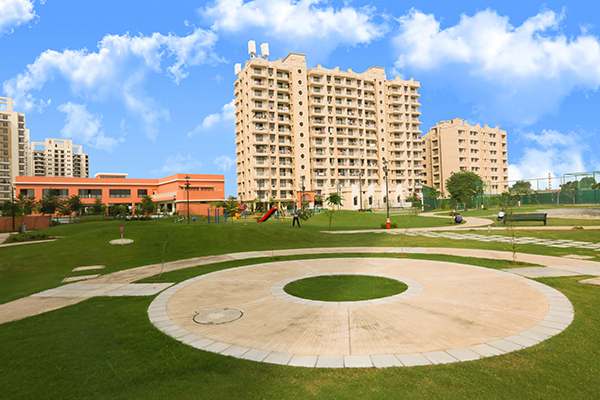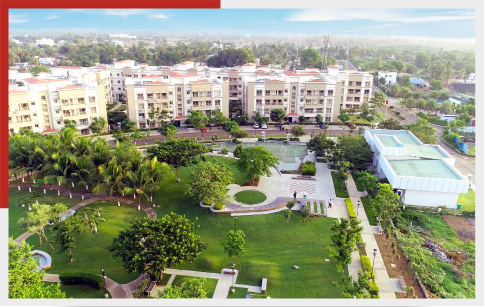
The definite answer to the question, which is better: under construction or ready to move in, doesn’t exist. There is no right or wrong, it all depends on the buyer and his/her end goals and financial status. We will venture into each aspect in detail but before that here are a few statistics for your reference.
The Indian Real estate sector is set to achieve a market size of US$ 1 trillion by the year 2030 and will eventually have a contribution of 13% in India’s GDP by 2025. Retail, hospitality and commercial real estate are growing at a rapid pace, providing the crucial infrastructure for India’s growing needs. NRIs are also actively investing the Indian property with Bengaluru expected to be the most favoured property investment destination followed by Ahmedabad, Pune, Chennai, Goa, Delhi and Dehradun. But for potential homebuyers, the year 2019 was not any different from the last few years. Prices were stagnant and developers are just focusing on clearing existing inventory rather than launching new projects as they are grappling with regulatory changes like RERA, GST, NBFC crisis and overall subdued demand.
Buying one’s own home is a huge milestone in a person’s life. But achieving that dream is a huge task and requires a lot of technical know-how along with mental and physical strength.
Home buyers have options of investing in an under construction property or a ready to move in flat. Under construction refers to a building, structure, or project that is not complete and is actively being worked on and ready to move is one which is built and ready for possession.
On the face of it, an under construction project may seem like the cheaper and better option but that isn’t the case always. Both have their pros and cons which we will analyse one by one.
Under Construction:
The Pros:
Various choices: An under-construction property offers its buyers a number of preferences to choose from on the basis of unit size, floor rise, direction of apartment etc.
High returns: The prices of under-construction properties are comparatively lower than ready-to-move-in properties. During the construction stage, the prices get an upward shift and vary as the construction progresses. So, there are high chances that the project will witness price appreciation due to an extended window period between the buying stage and delivery timeline. If the property is sold closer to possession, there is a good chance of earning a healthy appreciation on the capital investment.
Easier on the pocket: An under-construction property does not hurt a buyer’s pocket as much as a ready home does at the time of buying. If factors such as location, area, property type and builder are same, a ready-to-move house costs more than an under-construction one. Pricing can differ from 10-30%.
RERA Compliance: Any property with Occupation Certificate as on 1 May, 2017, is mandated to be registered under their States’ RERA. Under-construction properties, come under RERA and thus builders are liable to comply with fair trade practices.
Tax Benefits: The new tax rates (w.e.f. 1st April 2019) on under-construction apartment has been reduced from 12% to 5% for residential properties and 8% to 1% for affordable housing without the Input Tax Credit. The tax benefits on the interest paid during the construction of a property can be claimed in five equal instalments beginning from the year of possession.
Custom changes: All the changes that don’t alter the basic construction of the building can be incorporated.
The Cons:
High risk: During construction stage, there are huge chances of delay in possession because of land disputes, lack of funds, new regulatory policies, incomplete permissions from authorities, builders filing for bankruptcy etc.
Disparity in final product: All that glitters is not gold. The major issue with under-construction property is that there may be some discrepancies in the final product from the sample flat. To avoid this, you must regularly check the amenities and specifications that would be a part of the delivered flat.
GST: Buying an under-construction property without a Completion Certificate at the time of purchasing will attract GST of 12% of the total cost of property. Stamp duty and registration charges will have to be paid separately, resulting in heavy expenditure on taxes.
Legal Status: Builders can start the project right after receiving the commencement certificate from the Development Authority but they also need various other permissions from relevant regulatory departments. In case of any lapses on the part of the builder, the buyer will have to pay unnecessary costs and may not receive the occupancy certificate.
Extra Charges: There is no clarity on maintenance charges till one finally occupies the flat or the resident’s association is formed. Maintenance charges are a recurring expense and high maintenance charges may inflate the future valuation of the complex unless it is being projected as a premium one.
Ready to Move in Flats:
The Pros:
Immediate availability: One of the prime advantages of a ready unit is the absence of any waiting period. One can complete the payment and documentation and move in immediately.
No disparity: The unit can be inspected before purchase and there is no risk of discrepancies with the promised layout, features, and amenities, among other important things.
Free from GST Implication: Ready to move properties which have been issued the completion certificate are left out of the ambit of GST.
Legal Status: Legal title is verified and the buyer is assured of its legal status.
Extra Costs: There is full clarity on total costs and maintenance charges and other expenses if facilities availed.
Feedback on property: Buyer has the option of exploring the nearby area and speak to residents for feedback on the locality and facilities.
Low Risk: Ready-to-move-in property don’t have the hassles of delays or issues during construction as the end product is ready and home buyer just has to take possession after completing required payment and documentation.

The Cons:
Upfront payment: Payment including down payment, registration charges, stamp duty etc. have to made upfront and rest amount has to be made in EMIs.
More paperwork: Buyers of ready-to-move-in properties have to undertake a lot more legal work and documentation for the ownership of the property.
Inflated cost: High price appreciation is expected when a project is under construction. After sometime, the price of the flat appreciates slowly or becomes overly inflated.
Limits on modification: If you invest in ready-to-move-in property, there is little scope of internal modifications.
High Cost: One of the most obvious drawbacks of buying a ready-to-move unit is the higher cost as compared to an under-construction property. As mentioned above, the cost difference could be anywhere between Rs 20-30 per cent.
Quality of construction: In case of a ready unit, one cannot conduct checks like quality of construction, raw materials used, the strength of the foundation etc.
Age of the property: A ready unit doesn’t always mean a newly constructed unit. It might have been up for sale for a long time. Hence, if it has not been maintained properly, it might start looking old.
Conclusion
One will make the right choice between an under construction property and ready to move in flat only when one understands the purpose of buying the property; as an investor or an end-user.
From an investor’s point of view, an under-construction property is more profitable because during the construction stage, the capital value is at its lowest but increases as the construction progresses. If an end-user is looking for a handsome ROI, investing in under-construction property makes more sense as one will get high returns on investment.
An end-user can opt for a ready-to-move-in flat if one has plans of immediate possession. It also offers tax rebates so one saves on the investment. Moreover, if one is staying in a rented property, one can start paying the EMIs and move into the new home as well. If it is the buyer’s second property, it can be leased it out to pay EMIs. Ready to move in properties have their own perks provided one has a ready amount for down payment and an approved home loan.
Ashiana, Ashiana Housing build homes. Homes surrounded by vast green spaces and fresh breeze. Homes cocooned in secured gated complexes. Homes where futures are forged and there are opportunities to grow. And Homes in environments brimming with healthy activity, trust and respect. At heart, we build communities with care.
Other posts by Ashiana
Join 1000+ of fellow readers. Get expert real estate knowledge straight to your inbox absolutely free. Just enter your email address below.